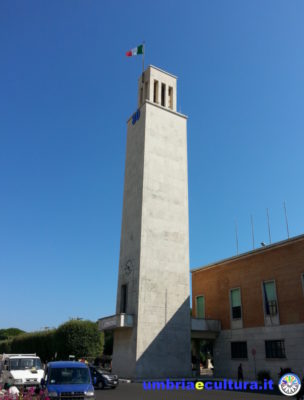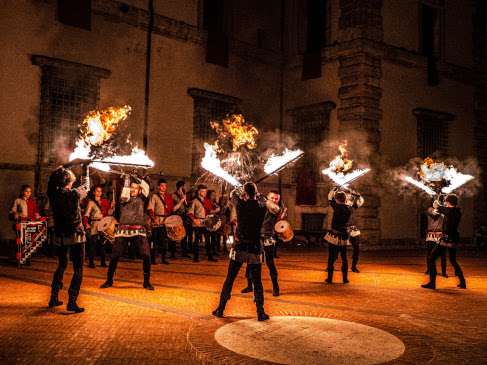Sabaudia, in Southern Latium on the Tirreno sea, is a small city built in only 253 days and inaugurated in 1935, under the fascist regime. Eugenio Montuori, Alfredo Scalpelli, Luigi Piccinato and Gino Cancellotti were the four rationalist architects who in 1933 won the national competition for its design.
Italian rationalism is an architectural trend that developed in Italy in the 1920s and 1930s in connection with the international modern movement. It takes up the stylistic figures of classical architecture, stripping it of any tinsel or decoration.
The city was conceived according to the classical layout of the Roman urban area, that is, along a Cardo intersected by a Decumanus, whose crossing point represents the heart of the city.
In fact, at the intersection of the two road axes, the Town Hall building, covered in travertine, with its tower that acts as a counterpoint to the bell tower, bringing together (and in competition) politic and religious power.
In front of the Town Hall building stands the Casa del Fascio, now the headquarters of the Guardia di Finanza, covered with austere red bricks.
The religious building, dedicated to the Santissima Annunziata, was deliberately placed in a decentralized place with respect to the two administrative buildings, although in symbolic “dialogue” with them. Above the entrance door a mosaic where Benito Mussolini is easily recognizable while dealing with agricultural work, and inside it preserves the royal chapel, donated by Margherita di Savoia, originally located inside Palazzo Margherita in Rome.
It is wrong to associate the idea of rationalist architecture, therefore of regime, in Italy, with the lean and severe buildings, covered in travertine and brick, such as the Town Hall building with its tower, or even the church.
A surprising exception is the Palazzo delle Poste, with curved lines, covered with blue mosaic, the color of the Savoia royal family, and finished with red marble, which stand out in counterpoint with the plastered parts painted yellow.
It seems to live within a metaphysical framework, with marked geometries and pure color spots.
Sabaudia amazes and fascinates for its particularity: its young age distinguishes it from the usual Italian urban landscape and is a testimony to the political and social conception of a fragment of our millennial history.
Benedetta Tintillini
Find Sabaudia on Google Maps:



